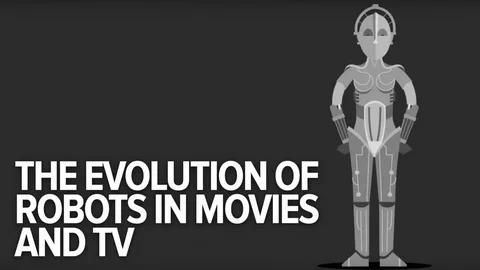Introduction
The integration of robotics into everyday life is reshaping the way we live, work, and interact with the world around us. From automated household chores to robotic companions, the evolution of robotics has transitioned from science fiction to an integral part of our daily routines. This article delves into the transformative journey of robotics, exploring its applications, impact, and the exciting future it holds.
Early Robotics: Industrial Revolution to Automation
Industrial Robotics The roots of robotics trace back to the Industrial Revolution, where machines were first employed to perform repetitive and strenuous tasks in manufacturing. Early industrial robots were large, specialized machines designed for specific functions, such as assembly line work. These innovations laid the foundation for the automation of labor-intensive processes, increasing efficiency and productivity in various industries.
Automated Manufacturing As technology advanced, robotics played a key role in the automation of manufacturing processes. Robots with articulated arms and precise movements became commonplace in factories, handling tasks like welding, painting, and assembly. This automation not only improved speed and accuracy but also contributed to safer working environments for humans.
Robotics in Everyday Spaces
Robotic Vacuum Cleaners The advent of robotics in everyday spaces became evident with the introduction of robotic vacuum cleaners. These compact robots use sensors and algorithms to navigate and clean living spaces autonomously. They represent a shift in the perception of robotics from industrial settings to the home, making daily chores more convenient for users.
Automated Lawn Mowers Robotic lawn mowers extend the automation concept to outdoor spaces. Equipped with sensors and mapping technology, these robots can navigate lawns, mow grass, and return to their charging stations autonomously. This application showcases the versatility of robotics in addressing routine tasks in diverse environments.
Personal Robotics: Assistance and Companionship
Assistive Robots for Elderly Care Advancements in robotics have led to the development of assistive robots designed to support elderly individuals in their daily lives. These robots can assist with tasks like medication reminders, fetching items, and providing companionship. By addressing the challenges of an aging population, these robots contribute to enhanced quality of life.
Social Robots and Companions The evolution of robotics extends beyond functional tasks to emotional engagement. Social robots, designed to interact with humans on an emotional level, offer companionship and support. From robotic pets to humanoid companions, these robots provide a sense of connection and alleviate feelings of loneliness.
Education and Research in Robotics
Robotics in Education The integration of robotics in education has become a valuable tool for teaching and learning. Educational robots, often designed with a focus on programming and problem-solving skills, engage students in hands-on activities. These robots not only facilitate STEM education but also foster creativity and critical thinking.
Robotics Research and Exploration The field of robotics continues to evolve through ongoing research and exploration. Robotics researchers are developing innovative solutions for a wide range of applications, from medical robots assisting in surgeries to autonomous drones for various industries. The collaborative efforts of scientists, engineers, and innovators drive the continual expansion of robotic capabilities.
Challenges and Ethical Considerations
Job Displacement and Economic Impact The increased integration of robotics in industries raises concerns about job displacement. While robots can enhance efficiency, there is a need for proactive strategies to address potential economic impacts, such as reskilling the workforce and creating new job opportunities in emerging fields.
Ethical Considerations in AI and Robotics As robotics becomes more sophisticated, ethical considerations come to the forefront. Issues related to privacy, data security, and the responsible use of artificial intelligence (AI) in robotics demand careful attention. Establishing ethical frameworks and regulations is essential to ensure the responsible development and deployment of robotic technologies.
The Future of Robotics: AI, Human-Robot Collaboration, and Beyond
Advancements in Artificial Intelligence (AI) The future of robotics is closely tied to advancements in artificial intelligence. AI algorithms enable robots to learn, adapt, and make decisions in real-time. This dynamic interaction with the environment enhances the capabilities of robots, paving the way for more complex and context-aware applications.
Human-Robot Collaboration The evolving landscape of robotics emphasizes collaborative efforts between humans and robots. Cobots, or collaborative robots, are designed to work alongside humans in shared workspaces. This collaborative approach leverages the strengths of both humans and robots, creating synergies in productivity and problem-solving.
Conclusion
The evolution of robotics from industrial automation to everyday companionship reflects the transformative impact of technology on our lives. As robots become more integrated into everyday spaces, the challenges and ethical considerations associated with their use necessitate thoughtful and responsible development. The future promises a harmonious coexistence between humans and robots, with advancements in AI and collaborative robotics shaping a world where technology enhances our capabilities and augments our daily experiences.
FAQs
- How did robotics transition from industrial settings to everyday spaces? The transition from industrial settings to everyday spaces began with applications like robotic vacuum cleaners and automated lawn mowers. These robots brought automation into homes, addressing routine tasks and making daily chores more convenient.
- What are some examples of personal robotics for assistance and companionship? Examples include assistive robots for elderly care, which support tasks like medication reminders, and social robots designed to provide companionship. These robots contribute to improving the quality of life for individuals in various contexts.
- How is robotics integrated into education? Robotics is integrated into education through educational robots designed for teaching programming and problem-solving skills. These robots engage students in hands-on activities, fostering STEM education and promoting creativity and critical thinking.
- What are some challenges associated with the increased use of robotics in industries? Challenges include concerns about job displacement and economic impacts. Proactive strategies, such as reskilling the workforce and creating new job opportunities, are essential to address these challenges.
- What is the future of robotics, and how does artificial intelligence play a role? The future of robotics is closely tied to advancements in artificial intelligence (AI). AI enables robots to learn, adapt, and make decisions in real-time, enhancing their capabilities. The future also emphasizes human-robot collaboration, with collaborative robots working alongside humans in shared workspaces.

